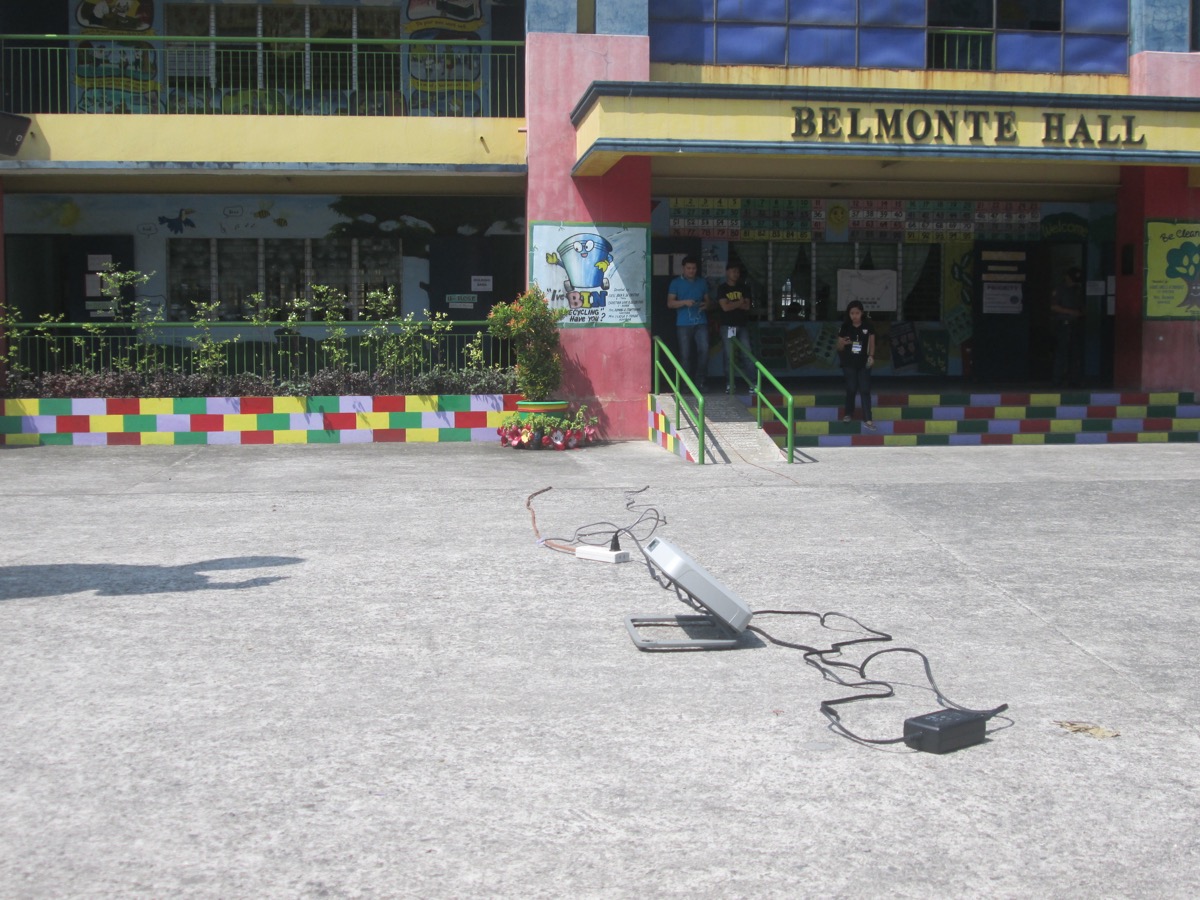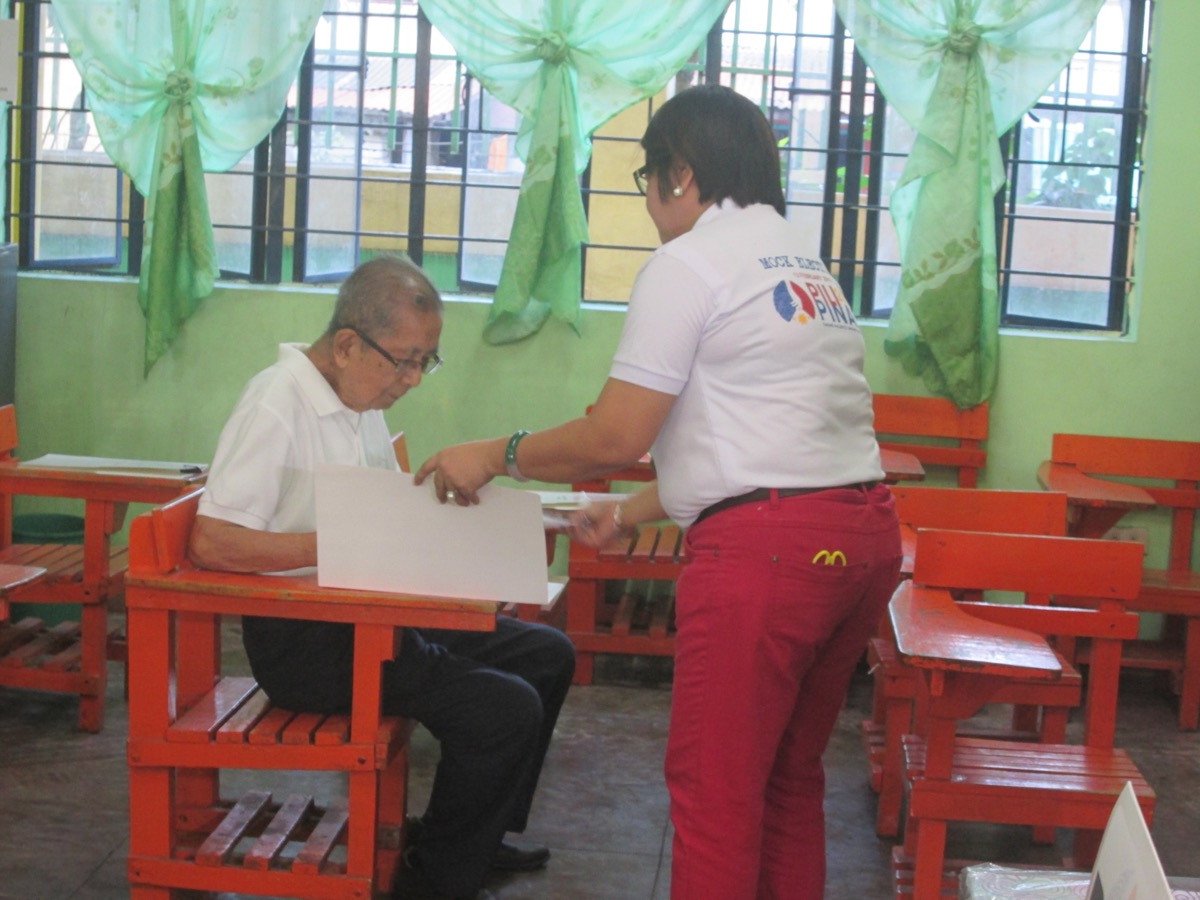
By MARIA FEONA IMPERIAL and YVETTE B. MORALES
THE nationwide mock elections held Saturday were generally smooth, save for some glitches in the vote-counting machines (VCMs) and discrepancies between automated and manual results due to incomplete ballot shading.
To boost public confidence in the security features of VCMs amid software issues, the Commission on Elections conducted simulations of voting, transmission and canvassing and consolidation in 40 mock polling places nationwide. (See Comelec urges public to join nationwide mock elections)
Manual audits done afterwards, however, show variances ranging from one to three votes in some candidates, in at least two of the voting centers in Metro Manila.
A tally of the manual count in Bagong Pag-asa Elementary School yielded the following results:
| Vice President | VCM count | Manual audit |
| Candidate 1 | 11 | 11 |
| Candidate 2 | 16 | 16 |
| Candidate 3 | 12 | 12 |
| Candidate 4 | 12 | 14 |
| Candidate 5 | 7 | 8 |
| Candidate 6 | 7 | 7 |
The same problem was found in Robinsons Place Ermita, the only mall precinct for the mock polls, with differences ranging from two to three votes.
The Board of Election Inspectors (BEIs) and the local Comelec say the variance is due to either over-shading or incomplete shading. At the end of the day, however, electronic results will prevail over manual audit count, the local Comelec said.
No ballots rejected by VCMs
Despite the discrepancies, no ballots were rejected by the VCMs in both precincts. Only when there were ambiguous marks did the machine return the ballots, offering the voter an option to change his or her vote or feed the ballot to the VCM.

Arwin Serrano of the Parish Pastoral Council for Responsible Voting (PPCRV) said any voter education campaign by the poll body and watchdogs should emphasize confidence in ballot shading.
The threshold of the machines, which would dictate the level of shading that will be appreciated by the VCMs, is yet to be decided upon by the Comelec. It shall be included in the general instructions (GI) of the 2016 elections to be released next week.
Aside from shading, excessive marks also caused delays in the vote-counting of the machines.
Lawyer Rona Ann Caritos of the Legal Network for Truthful Elections (LENTE) is asking the Comelec to increase the size of the boxed space for the signature of the BEI. She said there were instances when the ballots weren’t appreciated by the VCMs because the signature exceeded the box.
LENTE also recommends that circles in the ballots be made brighter and more prominent because they could be overlooked by senior citizens and people with poor vision.
For Caritos, the mock polls would have been easier “to observe from a monitor’s perspective” had the GI been released earlier.
New hash codes
Aside from the vote counting, an anti-fraud group found that the hash code of the machine was different from what was initially published by the Comelec.
Automated Elections System (AES) Watch convenor and Computer Professionals’ Union national coordinator Rick Bahague said the hash code, or the fingerprint of the trusted build which was announced Feb. 12 by the Comelec was different from what was initialized by the VCM in Bagong Pag-Asa Elementary School on Saturday morning.
“The codes are supposed to be the same,” Bahague said.
If the hash codes do not match, it could be a different program.
“It can do whatever it wants to do because it’s not the trusted program,” Bahague said. “It is possible that it was programmed to vote for other candidates.”

Bahague, who is also a convenor of the anti-fraud group Kontra Daya, said the Comelec should publish the hash code so they can compare it during the final testing and sealing of the VCM on May 2 to 6.
No proper source code review
Bahague said that even before the mock polls, the Comelec was unable to administer a proper source code review.
The source code is the “human-readable version of the computer programs” which shows the programs running on the machines and even the laptops in city halls where the votes will be transmitted via satellite, among others.
It also allows checking whether the VCMs are counting votes properly.
Section 12 of R.A. 9369 states that “(once) an AES technology is selected for implementation, the Comelec shall promptly make the source code of that technology available and open to any interested political party or groups which may conduct their own review thereof.”
“(Ang) ginawa nila, pinapakita iyong source code (na) naka LCD screen. (Hindi) iyon ang right way to do source code review (They just showed the source code on the LCD screen. That’s not the right way to do a source code review),” Bahague said.
The source code review was just one of the glitches listed by the Center for People Empowerment in Governance in astudy entitled “30 Vulnerabilities and Safeguards vs Cheating in the Automated Election System 2010.” (See:Study questions credibility of May 10 polls)
VCMs better than PCOS
Voters who took part in the mock polls found the VCMs faster and easier to operate compared to PCOS machines.
Myrna Palma, one of the pre-identified voters in Bagong Pag-Asa Elementary School in Quezon City, said she had witnessed PCOS machines overheat in the last elections. She described the voting process during the mock polls as efficient, and said it could go faster if voters brought with them a list of their preferred candidates.
But for 88-year-old Aniceto Mascarina, who was accompanied by his daughter to the polling center, convenience in voting is not just about the efficiency of machines.

“Kailangan ko ng kasama. Ngayon (mock elections), hindi mo na babasahin iyong pangalan. Sa eleksyon kailangan mabasa mo nang mabuti iyong pangalan (I need company. I’m not required to read the names for the mock elections, but it will be different on election day itself),” Mascarina said.
“Pwede po tayong magpasama sa mga anak natin … at mauuna po kayo sa pila (You can ask your children to go with you, and you will be on the priority lane),” an election official told the senior citizen voter.
Palma and Mascarina were among the 17 out of the 134 pre-identified voters in District 1, who showed up. One hour before the closing of precincts, observers were allowed to serve as dummy voters.
Vote verification feature missing
Parish Pastoral Council for Responsible Voting (PPCRV) volunteer coordinator Danilo Reyes said despite the low turnout in Saturday’s mock elections, the simulation turned out fine.
But Reyes, who also participated in the mock polls, was looking for the vote verification feature after the ballot was fed to the machine.
The vote verification is one of the glitches anti-fraud group Kontra Daya found in 2010, which is also mandated by Republic Act 9369 or the Election Automation Law.
According to Section 7 of the law, the AES should “provide the voter a system of verification to find out whether or not the machine has registered his choice.”
But the Comelec said it won’t enable the feature as it is prone to vote-buying. (See: Comelec won’t enable ticket, on-screen machine features )
The feature would have given the voters assurance that their votes were counted, Reyes said.





